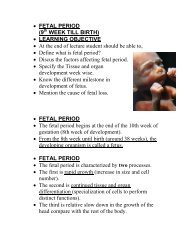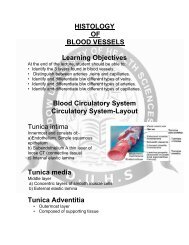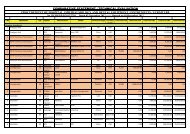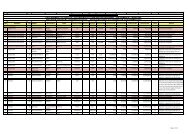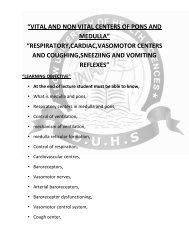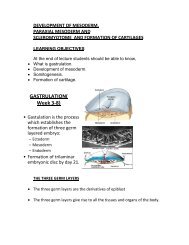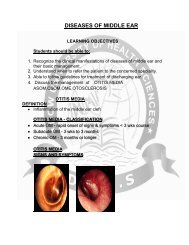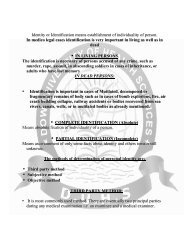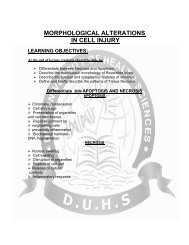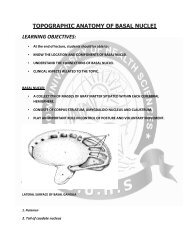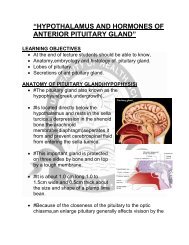“VITAL AND NON VITAL CENTERS OF PONS AND MEDULLA”
“VITAL AND NON VITAL CENTERS OF PONS AND MEDULLA”
“VITAL AND NON VITAL CENTERS OF PONS AND MEDULLA”
Create successful ePaper yourself
Turn your PDF publications into a flip-book with our unique Google optimized e-Paper software.
“CONTROL <strong>OF</strong> VENTILATION (CONTROL <strong>OF</strong> RESPIRATION)”<br />
• refers to the physiological mechanisms involved in the control of<br />
physiologic ventilation.<br />
• Gas exchange primarily controls the rate of respiration.<br />
• The most important function of breathing is gas exchange (of<br />
oxygen and carbon dioxide).<br />
• Thus the control of respiration is centered primarily on how well<br />
this is achieved by the lungs.<br />
“THE MECHANISM <strong>OF</strong> GENERATION <strong>OF</strong> THE VENTILATOR”<br />
• The mechanism of generation of the ventilatory pattern is not<br />
completely understood, but involves the integration of neural<br />
signals by respiratory control centers in the medulla and pons.<br />
• The nuclei known to be involved are divided into regions known<br />
as the following:<br />
“MEDULLA (RETICULAR FORMATION)”<br />
– ventral respiratory group (nucleus retroambigualis, nucleus<br />
ambiguus, nucleus parambigualis and the pre-Botzinger<br />
complex).<br />
– The ventral respiratory group controls voluntary forced<br />
exhalation and acts to increase the force of inspiration.<br />
– dorsal respiratory group (nucleus tractus solitarius).<br />
– The dorsal respiratory group controls mostly inspiratory<br />
movements and their timing.



